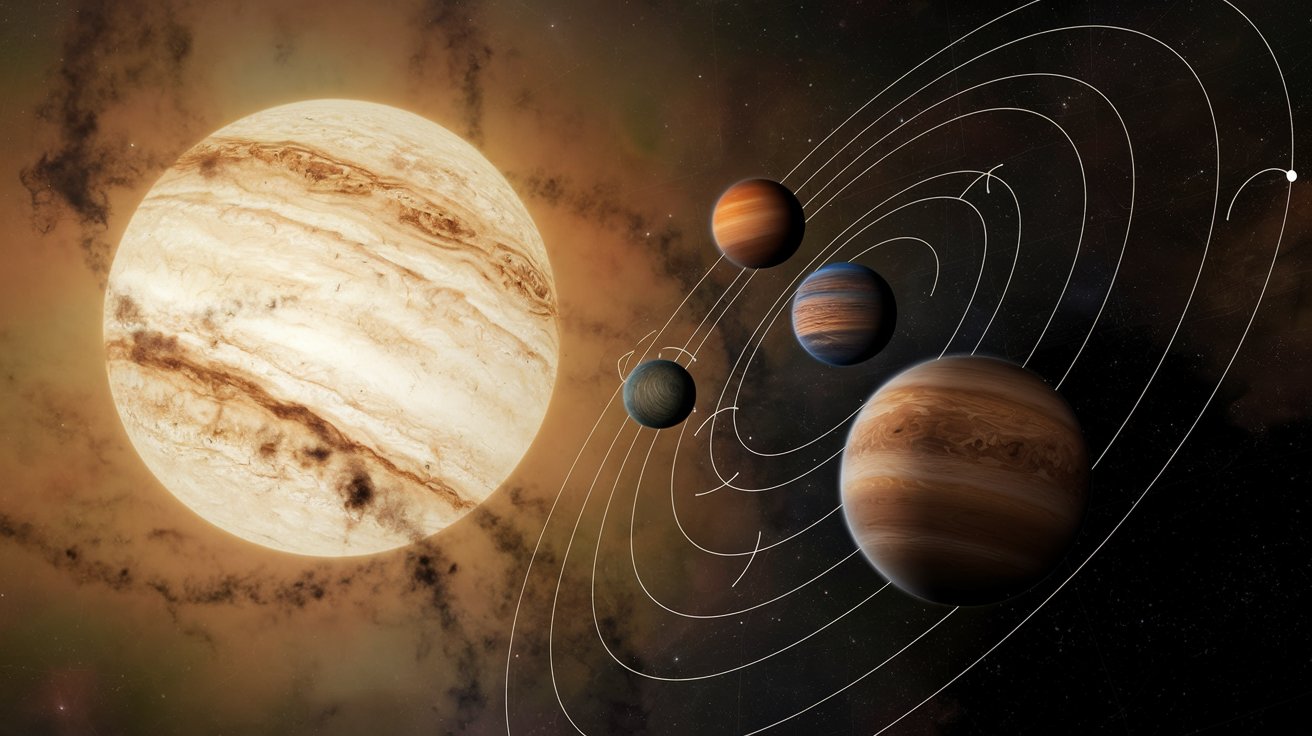Four Rocky Planets Confirmed Orbiting Nearby Barnard’s Star
In a groundbreaking discovery, astronomers have confirmed four small rocky exoplanets orbiting Barnard’s Star, located just six light-years away from Earth. This discovery offers key insights into the planetary systems around stars close to our solar system. While these planets may not be habitable, their unique characteristics and close proximity provide valuable data for future research into exoplanet formations.
Discovery of the Four Rocky Planets
What Makes These Planets Unique?
Barnard’s Star hosts four exoplanets—Barnard b, c, d, and e—each of which is smaller than Earth but still significant in the study of exoplanets. The key to their discovery lies in the advanced detection capabilities of the Gemini and Very Large Telescopes. The mass of these planets ranges from 19% to 34% of Earth’s, and their short orbital periods (ranging from 2.34 days to 6.74 days) make them ideal candidates for further study.
Key Highlights
| Planet | Mass (%) of Earth | Orbital Period (Days) |
|---|---|---|
| Barnard b | 19% | 3.15 |
| Barnard c | 25% | 4.12 |
| Barnard d | 30% | 2.34 |
| Barnard e | 34% | 6.74 |
These planets orbit Barnard’s Star, a red dwarf star, much closer than Earth orbits the Sun, causing surface temperatures that are too hot for life. The planets’ proximity and short orbital periods contribute to their high temperatures, making them inhospitable by current standards.
Why Is This Discovery Important?
Understanding the characteristics of these rocky planets allows researchers to broaden the scope of exoplanet studies. While they may not be habitable, studying their atmospheres, compositions, and orbits offers crucial insights into how rocky planets form in different types of star systems.
Habitability and Future Exploration
Can These Planets Support Life?
Currently, Barnard’s Star’s rocky planets do not lie within the star’s habitable zone, a region where conditions are favorable for liquid water. The planets’ high surface temperatures make them unsuitable for life as we know it. However, these planets are valuable in the context of exoplanet research as they help us understand more about rocky planets that may exist in the habitable zones of other stars.
Comparison of Habitable Zones
| Star | Distance to Habitable Zone | Known Planets in Zone |
|---|---|---|
| Barnard’s Star | Too close for habitability | 4 rocky planets |
| Sun | Earth lies in zone | 1 Earth-like planet |
This comparison provides a clear understanding that, while Barnard’s Star may not host planets capable of supporting life, it serves as a model for studying other distant planetary systems.
What’s Next in the Search for Life?
Astronomers are not stopping here. The discovery of these planets, combined with upcoming advancements in telescope technology, will allow for deeper studies into the characteristics of exoplanets. Researchers are particularly interested in locating planets that reside within the habitable zone of similar stars.
Why This Discovery Matters
Unveiling the Universe’s Secrets
The discovery of rocky planets so close to Earth not only adds to the list of known exoplanets but also boosts our understanding of planetary systems. By studying these planets, scientists can infer the types of planets that may exist in other solar systems and the potential for Earth-like conditions elsewhere in the galaxy.
Why Understanding These Planets is Critical for Future Space Missions
Exoplanet research has opened up the possibility of future space missions focused on finding life in distant worlds. By focusing on planets that have the right atmospheric conditions, space agencies like NASA hope to develop the tools necessary to detect signs of life on exoplanets.
Conclusion
While Barnard’s Star may not be home to Earth-like planets, the discovery of four small rocky planets orbiting this nearby star expands our understanding of planetary formation. These findings offer essential insights that will guide future research in the search for life beyond Earth. As technology advances and new exoplanet discovery methods emerge, our exploration of other star systems will continue to progress, inching closer to answering fundamental questions about the universe.
[USnewsSphere.com / NASA]





